Floods, fire and quakes: archive photos show homes that lost the fight with Mother Nature
Jaw-dropping images of homes hit by disaster
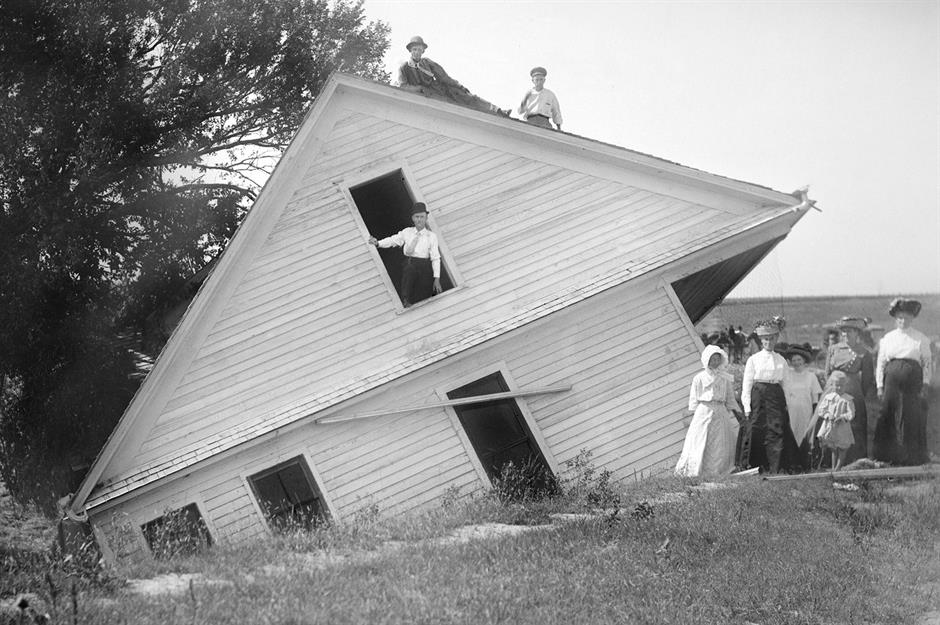
Few things are more terrifying than being forced from your home by the unstoppable power of a natural disaster. These days, we have sophisticated early warning systems and well-trained teams to mitigate Mother Nature's wrath, but this wasn't always the case.
These vintage photographs take us almost 150 years back in time to witness homes fall victim to floods, fire, earthquakes, tornadoes and more.
Click or scroll on to discover historic homes damaged or destroyed by disaster...
1878: grand house with tornado-damage, Connecticut, USA
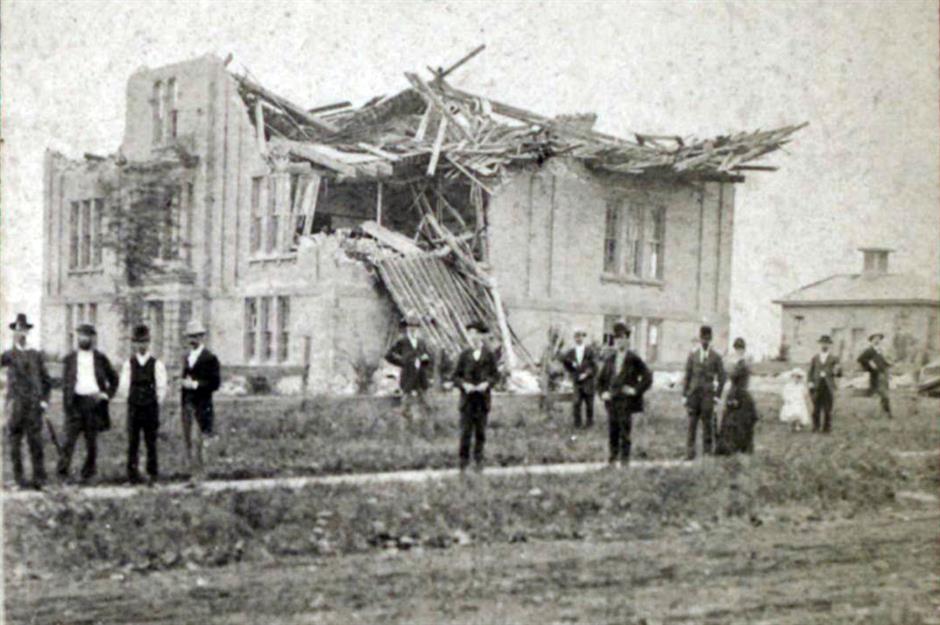
This ghostly image documents the aftermath of a violent tornado that hit Wallingford, Connecticut in August 1878. It cut a path half a mile (0.8km) wide and two miles (3km) long, killing 34 people, injuring 70 and destroying 40 homes – including this one.
Not only did it rip up trees and carry barns and buildings from their foundations, it damaged the top two floors of the new brick schoolhouse, the Catholic church, the windmill and even the brick factory.
To this day, it remains the deadliest tornado ever to hit the state.
1886: ruins of a home destroyed by a volcano, Bay of Plenty, New Zealand

On 10 June 1886, Mount Tarawera erupted on New Zealand's North Island. It covered the surrounding land in millions of tonnes of ash and debris, which smothered homes and killed as many as 120 people.
This photo shows schoolmaster Charles Haszard's house in Te Wairoa. He died along with his son, two daughters and a nephew, while his Canadian wife Amelia and two more daughters survived, along with some house guests.
Poignantly, the family's harmonium survived the devastation.
1889: extraordinary flood damage, Pennsylvania, USA
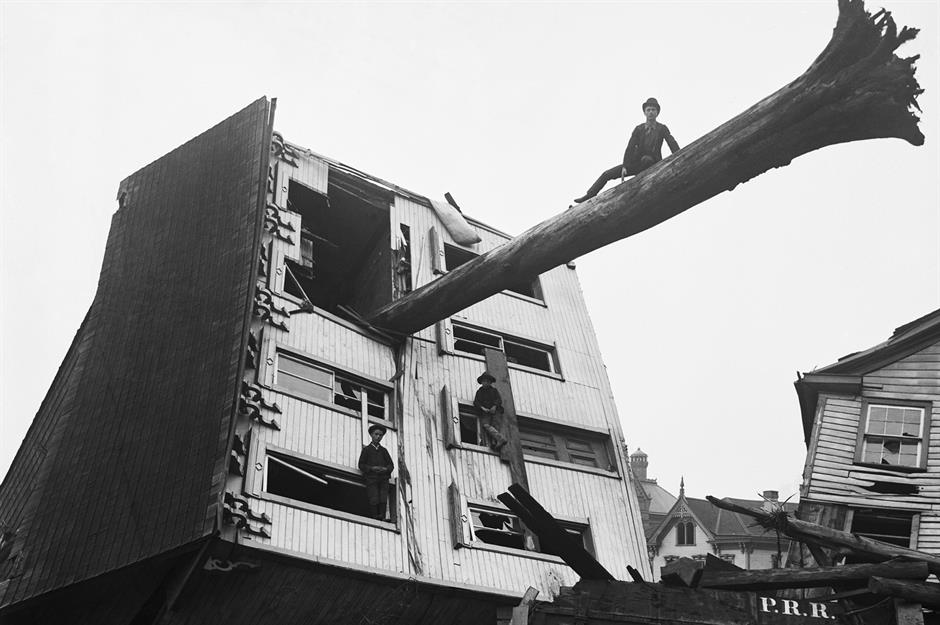
The Great Johnstown Flood hit Pennsylvania in May 1889. Heavy rains and poor maintenance caused the South Fork Dam to collapse, which sent a 30-foot (9m) wall of water crashing into Johnstown. 2,209 people lost their lives, including 99 entire families, while 1,600 homes were destroyed.
The Schultz house was ripped from its foundations, flipped over and impaled by an enormous tree. Miraculously, all six people inside survived.
1902: two men observe volcano damage, Martinique, France
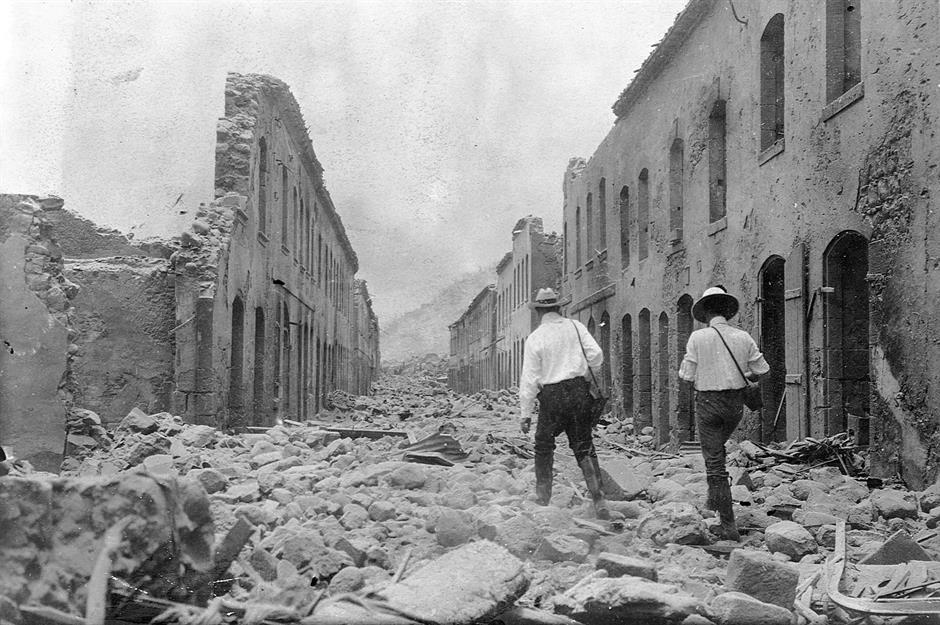
Today, Saint-Pierre is an idyllic haven on the coast of Martinique, a French territory in the Caribbean. It's almost impossible to imagine that, in 1902, the whole city was destroyed by the eruption of nearby Mount Pelée.
Incredibly, all Saint-Pierre's residents – around 30,000 – are believed to have lost their lives, with just two found surviving beneath the rubble.
The city was partially rebuilt in 1923, though many ruins remain, and is now home to about 4,000 people. Mount Pelée last erupted in 1929. These days, it's carefully monitored so residents can be evacuated at a moment's notice.
1910: a house sliding into a sinkhole, Texas, USA

Health and safety regulations certainly wouldn't allow people to climb all over this house today!
The simple shiplap home – thought to be in Texas – was photographed around 1910 after slipping off its foundation and into a sinkhole, possibly due to a rainstorm.
1912: the aftermath of a tornado, Saskatchewan, Canada
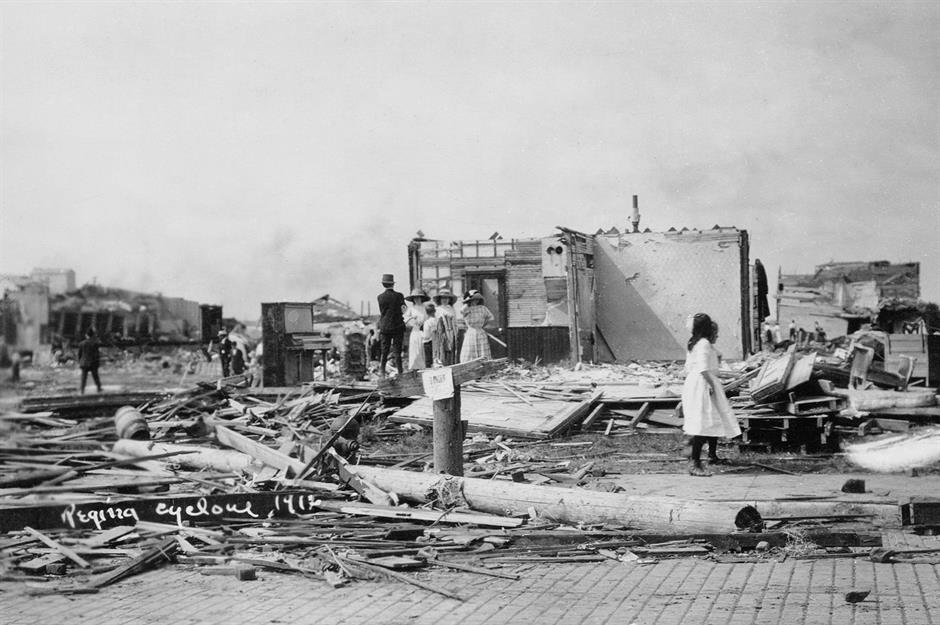
This old postcard shows the destruction wrought to the Canadian city of Regina by what was known locally as a cyclone, but what was actually a devastating F4 tornado that killed 28 people and left hundreds injured.
The twister touched down for just six minutes on 30 June 1912, but it travelled for 19 miles (30km), tearing through farmsteads, businesses, rail yards and residential neighbourhoods. Although reports on the exact amount differ, the damage costs were around CA$5 million – that would be more than CA$136 million ($98m/£74m) today.
1914: women clear up home damaged by subsidence, West Midlands, UK
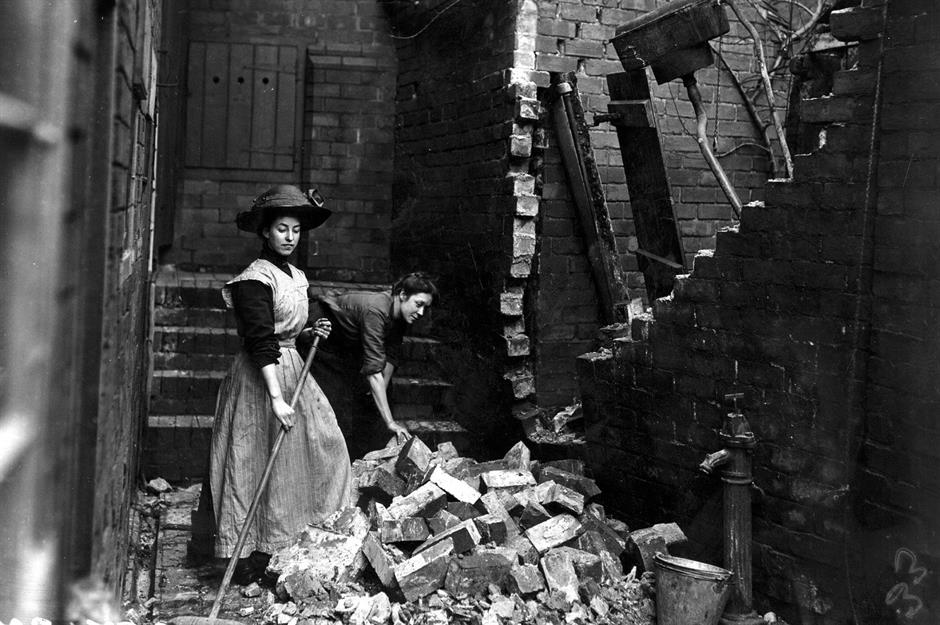
In 1914, on the eve of the First World War, homes in Cradley Heath near Birmingham were severely affected by subsidence, reportedly caused by mining.
A number of buildings were destroyed after 50 yards (45m) of the town's main street sank by five feet (1.5m). The incident also broke gas and water mains and caused £20,000 of damage – around £2 million ($2.7m) in today's money.
These women were pictured clearing up bricks from their partly demolished home. Note the old-fashioned lavatory cistern teetering at an angle in what had probably been the outhouse.
1920: snow and ice-covered chalet, Washington, USA
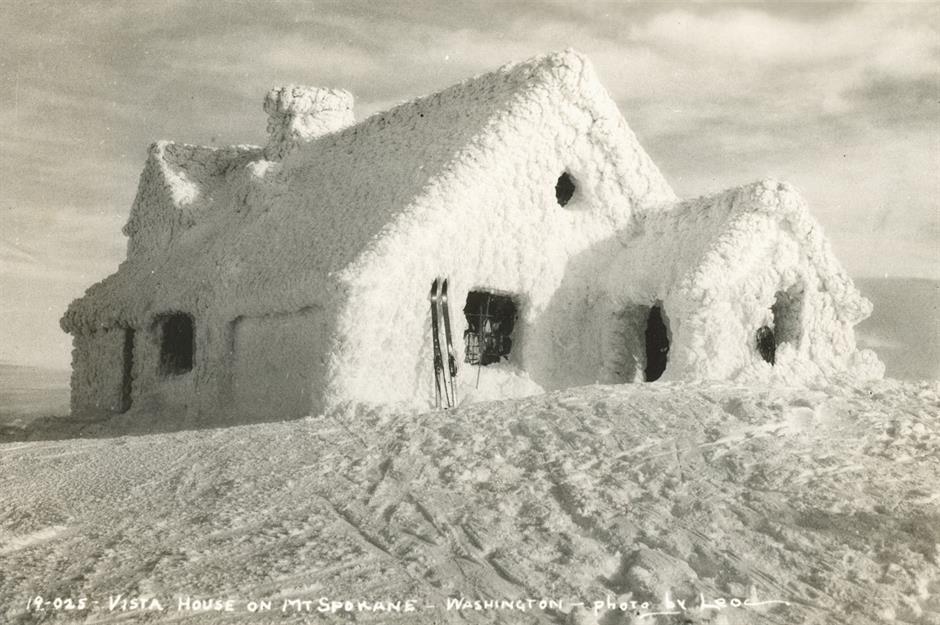
This photo is of a chalet known as Vista House on Mount Spokane, Washington. It was snapped by an intrepid photographer circa 1920, and despite being entombed in a thick layer of ice and snow, it may have been quite cosy inside.
Thanks to the igloo effect, a combination of insulation and body heat would have maintained a pleasant temperature for those within. How the house didn't collapse under the weight of its icy shroud, though, is anyone's guess!
1930: a dog awaits his master amid the rubble of their home, Tarn-et-Garonne, France
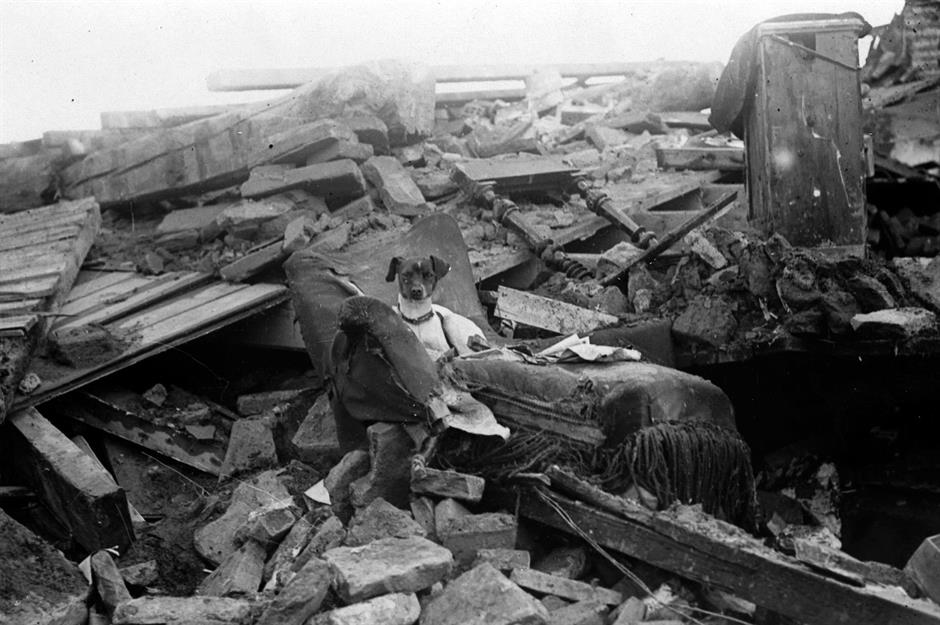
This heartbreaking photo shows a dog waiting hopefully for his master in the ruins of a flood in Moissac, France in March 1930.
Moissac was devastated when a dyke collapsed and "whole rows of houses were torn down" according to contemporary reports in The Sydney Morning Herald. The floods affected a swathe of southern France. They became known as the Great Floods of the Midi, in which 700 lives were lost and thousands of homes were destroyed across the region.
1935: men survey catastrophic flooding, Kansas, USA
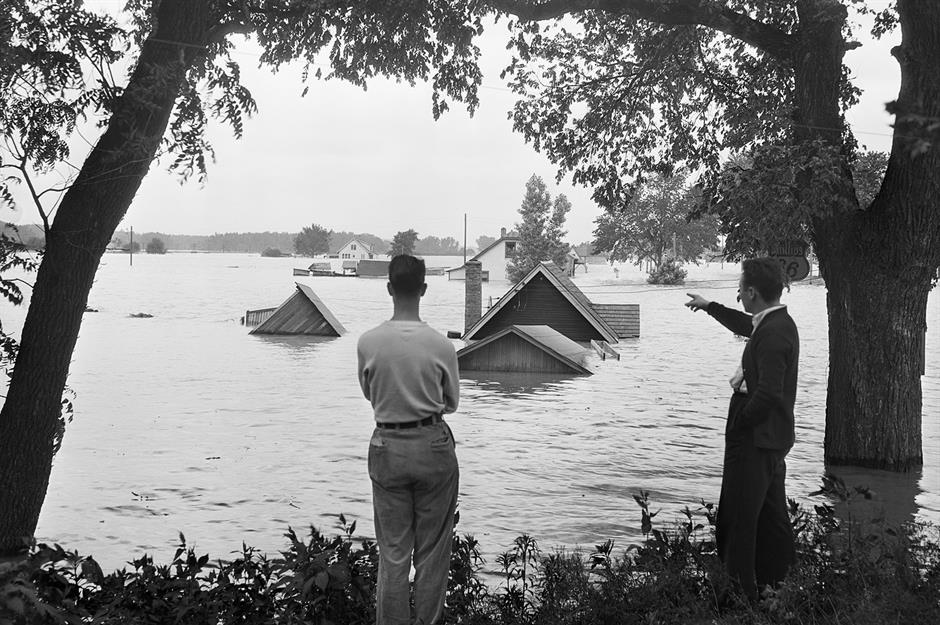
This extraordinary photo, taken near Lawrence, Kansas, shows one of 500 homes that were all or partly covered by deadly flooding that hit Kansas and Nebraska in May and June 1935.
The area had suffered from extreme drought and dust storms since 1930, during what became known as the Dust Bowl period. However, in May 1935, a month of rain was followed by multiple thunderstorms, causing major rivers to burst their banks.
McCook, Nebraska was devastated by the flooding, which was closely followed by an F4 tornado and a 'duster' that hit later that same day.
1954: a farmhouse buried by an avalanche, Graubünden, Switzerland
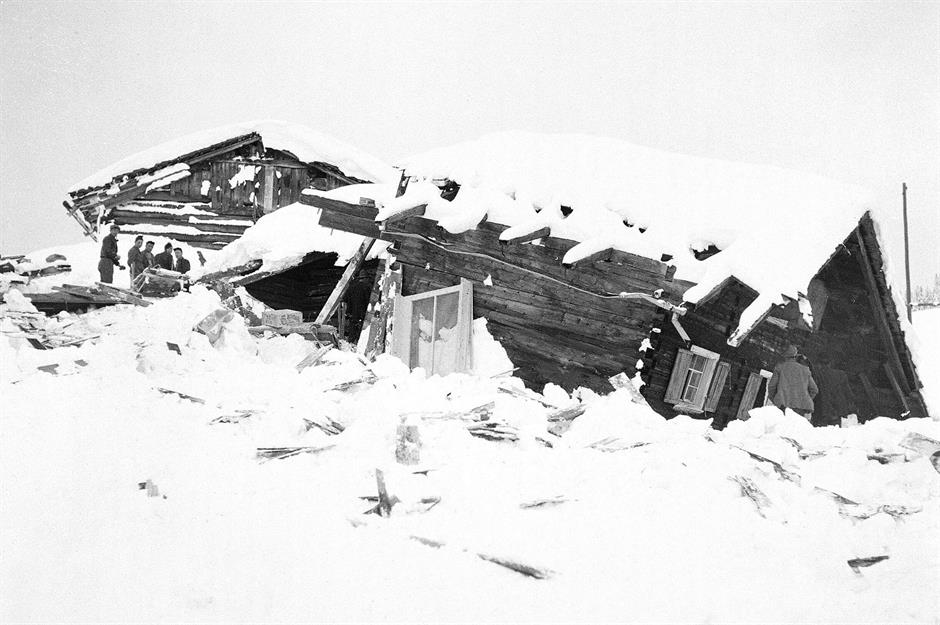
This farmhouse was obliterated by an avalanche that hit the Swiss village of St. Antönien in 1954.
On the 12th January, avalanches triggered by a massive snowfall the previous day crashed into St. Antönien, as well as the resorts of Klosters, Saas, Valzeina, Busserein and Langwies.
Villages in Austria and Germany were also badly affected, although thankfully not to the extent of the 1951 Winter of Terror, which saw more than 45,000 people trapped by avalanches across the Swiss, Austrian and Italian Alps.
1955: men stand on a hurricane-flattened home, USA
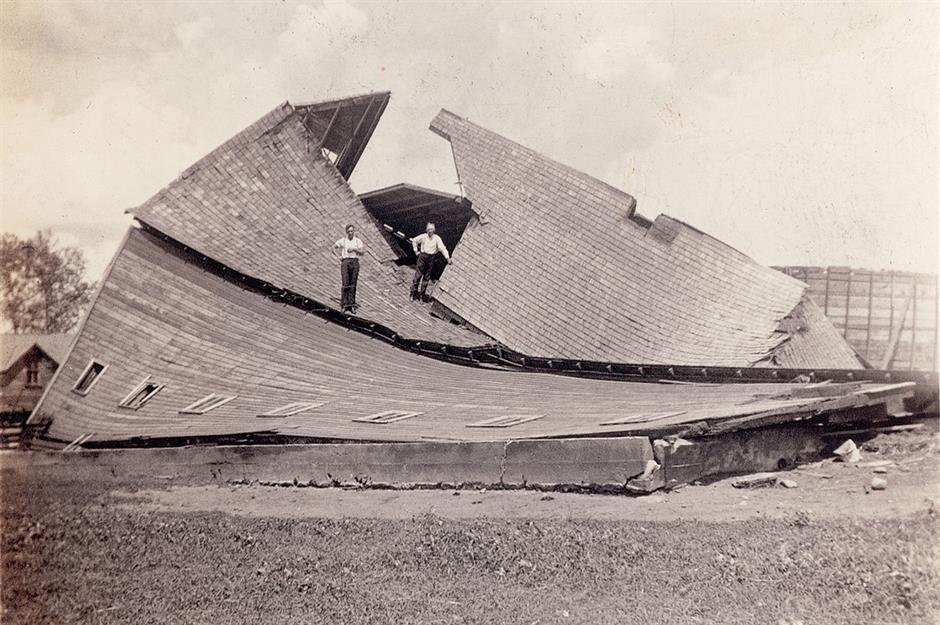
This home was flattened during the record-breaking 1955 hurricane season, which was the most disastrous and costly in recorded American history up to that point. Of the 13 tropical cyclones that year, 10 reached hurricane force and four were designated category three or higher.
Hurricane Diane hit New England in August 1955 and became known as the first $1 billion hurricane. It ravaged the entire East Coast and caused more than 100,000 New Englanders to lose their livelihoods after numerous mills and factories were destroyed.
1955: the chaos caused by a landslide, Quebec, Canada
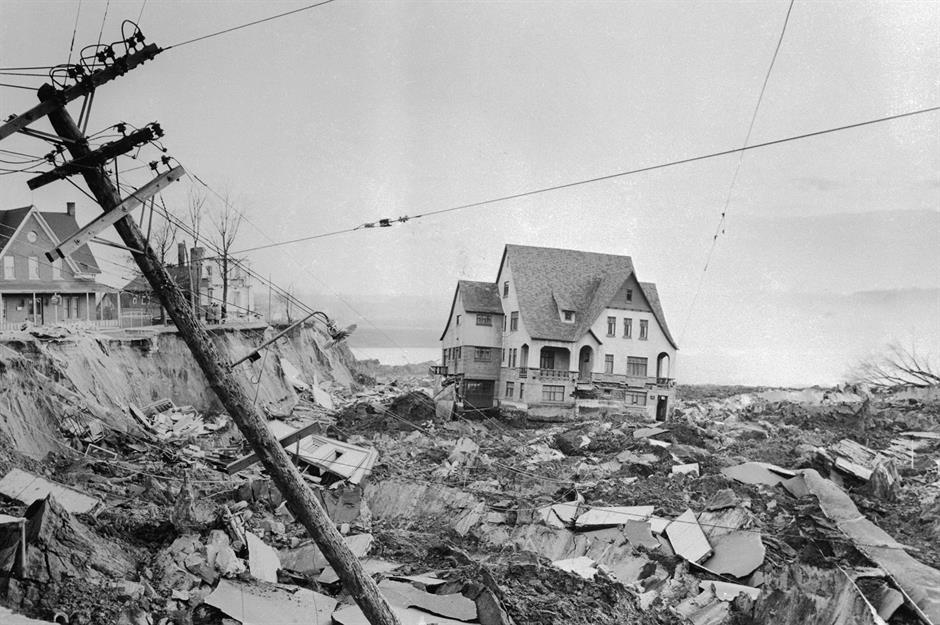
On 12 November 1955, residents of Nicolet heard an earth-shaking rumble and saw a cloud of dust and smoke shoot hundreds of feet in the air. Then they heard cries for help.
A landslide had carved away part of the town, reducing some buildings to rubble and causing others, like this one, to slip into the river. An apartment building, three houses and a service station were swallowed by a 40-foot (12m) deep and 1,000-foot (305m) long hole.
Miraculously, only three people were killed in the disaster.
1960: earthquake-damaged homes, Valdivia, Chile
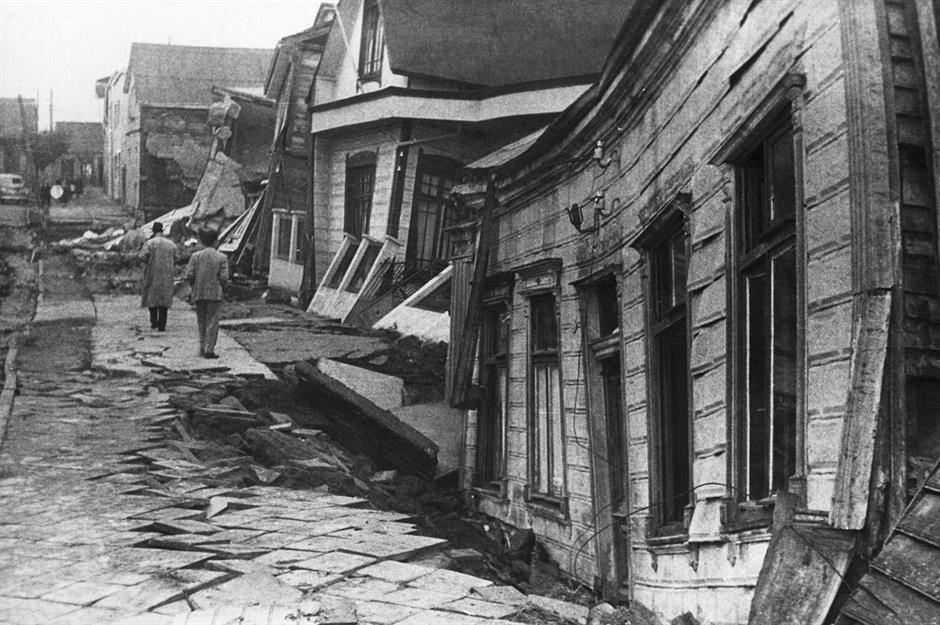
While it might not look like it, these damaged homes fared relatively well during the 1960 Chile earthquake.
With a magnitude of 9.5, it was the largest earthquake of the 20th century. Nearly half the homes in the city of Valdivia were left uninhabitable.
The quake triggered an 80-foot (25m) tsunami that hit the Chilean coastline and left around two million people homeless.
1962: a man surveys homes lost to North Sea Floods, Hamburg, Germany
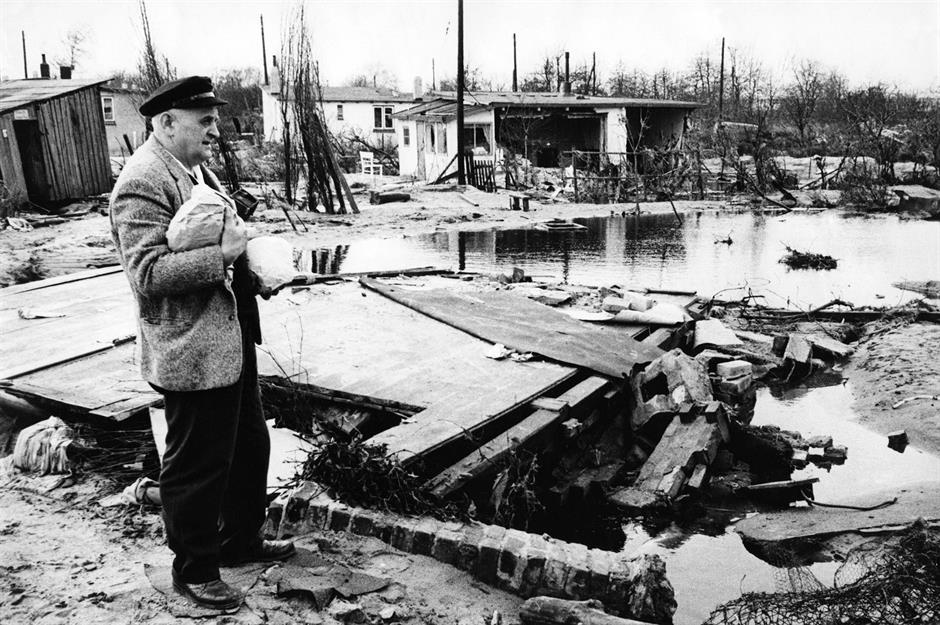
A man surveys the damaged homes in the wake of the North Sea Flood in Hamburg, Germany.
A severe storm, known as The Sheffield Gale, crossed the UK on 16 February 1962, damaging around two-thirds of the UK city's homes before moving onto the European mainland.
A 10-foot (3m) storm surge pushed water up the Weser and Elbe rivers, causing dykes to burst, flooding much of coastal north Germany. Hamburg was particularly hard hit, with 6,000 buildings destroyed, 20,000 people left homeless and 315 dead.
1962: a residential street after severe flooding, Catalonia, Spain
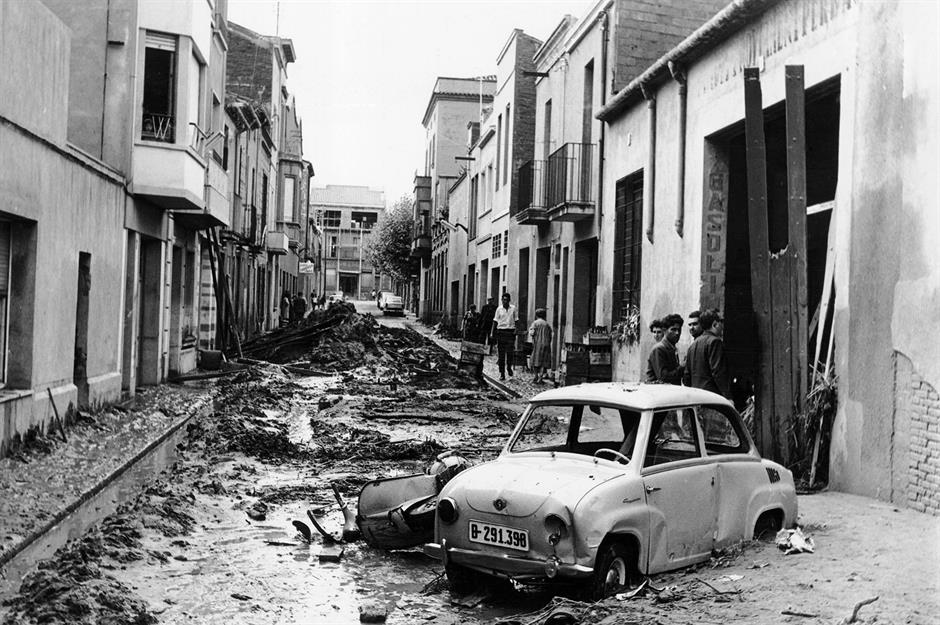
This scene of destruction was left in the wake of terrible flooding that hit Catalonia in September 1962.
The Vallès flood was caused by torrential rains that overwhelmed the Llobregat and Besós rivers. The flash flood was the worst ever to hit Spain, killing 815 people.
Loss of life was greatest in the Rubí area, where migrant residents had been pushed to build homes in flood-prone areas.
1965: boating past a flooded farm, Melk, Austria
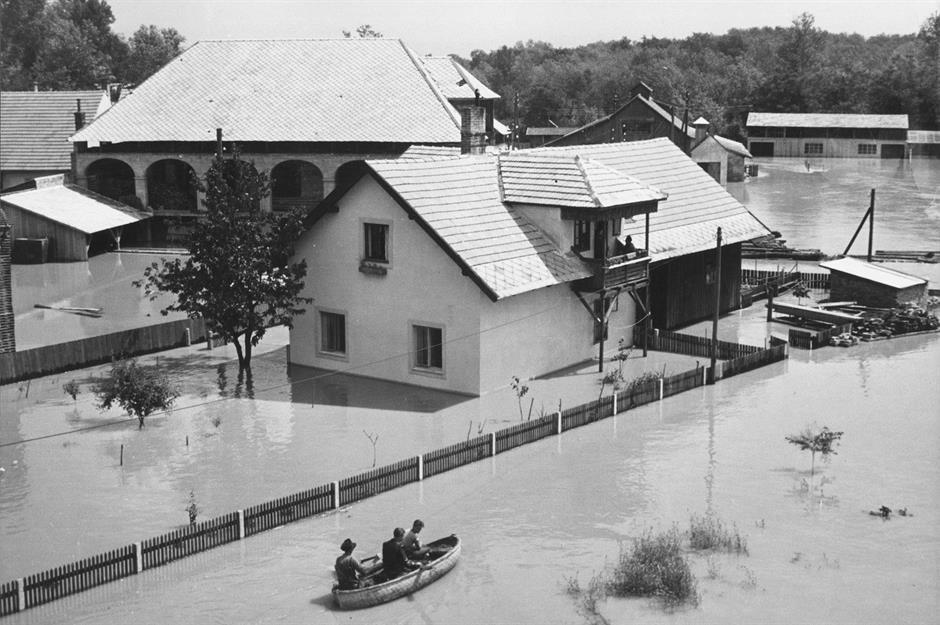
This shot of three people travelling by rowing boat across what had previously been dry land was taken in June 1965. Pöchlarn in Lower Austria was cut off from the rest of the region after the Danube overflowed, leaving many houses – including this one – at risk of collapse.
A large-scale rescue and relief operation was launched by troops and civilians along the Danube Valley in seven European countries, following what news agencies at the time described as the worst flooding in a decade.
1969: house caught in a bush fire, Victoria, Australia
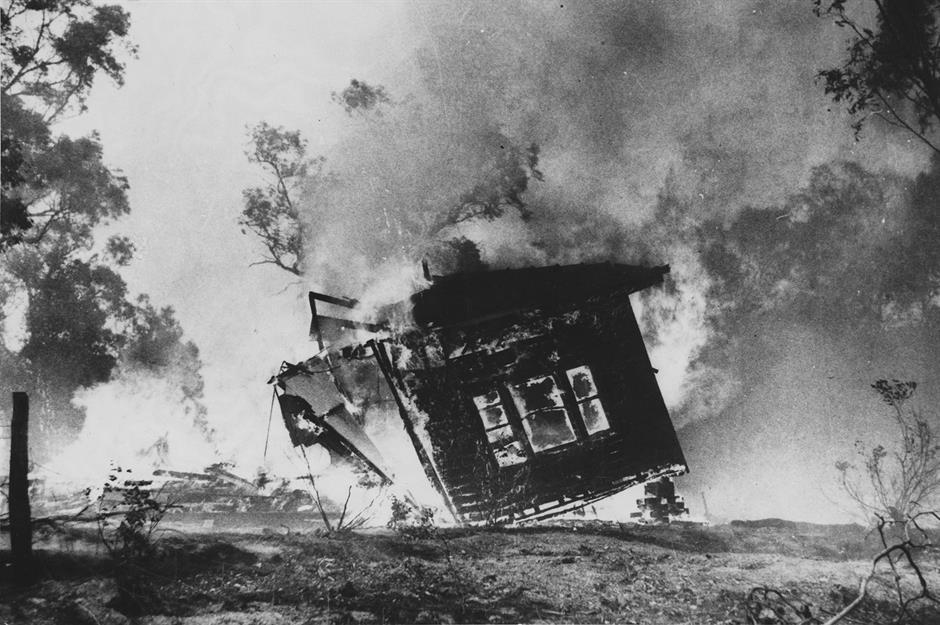
The bushfires that swept across Victoria in January 1969 were the worst the state had seen since 1943. This house at Diamond Creek, just 36 miles (58km) north of Melbourne, exploded into flames during the inferno.
On the northern side of the city, the town of Lara was engulfed in a wall of fire measuring 30 miles (48km) wide, destroying 40 homes and a 90-year-old church, leaving 150 people homeless.
In one day, 230 fires burned more than 800,600 acres (324,000ha) and killed 23 people.
1974: a woman checks her home for tornado damage, Ohio, USA
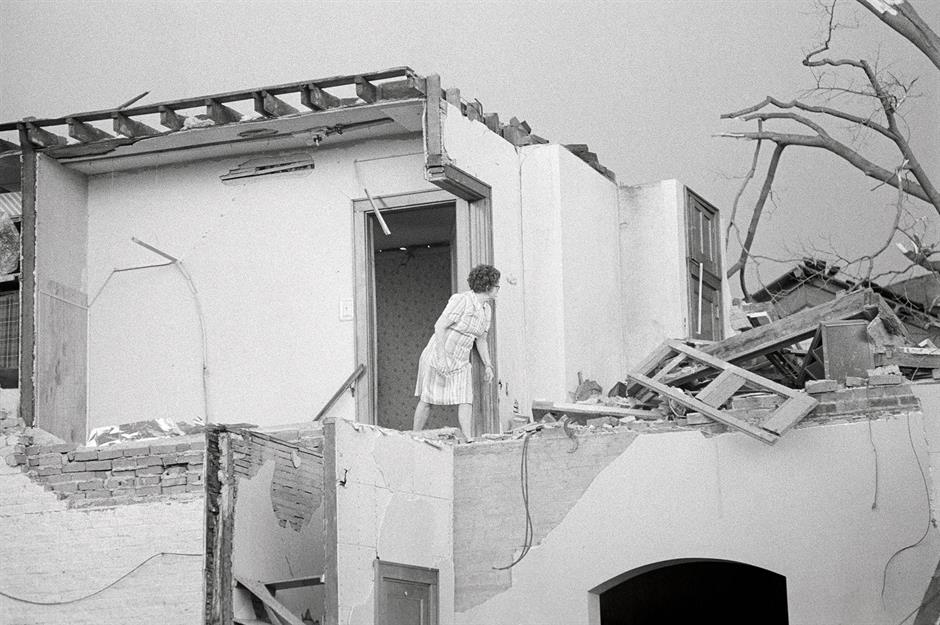
On 3 and 4 April 1974, a 'super outbreak' of 148 tornadoes swept through 13 states from the Great Lakes region into the Deep South.
Of the 30 twisters categorised F4 and above, two violent F5s touched in the town of Xenia and the Cincinnati suburb of Sayler Park, where this woman was pictured looking around her ruined home.
The Xenia tornado remains one of the most costly in US history, causing $250 million of damage – that's about $1.6 billion (£1.2bn) today.
1980: destruction caused by a deadly earthquake, Irpinia, Italy
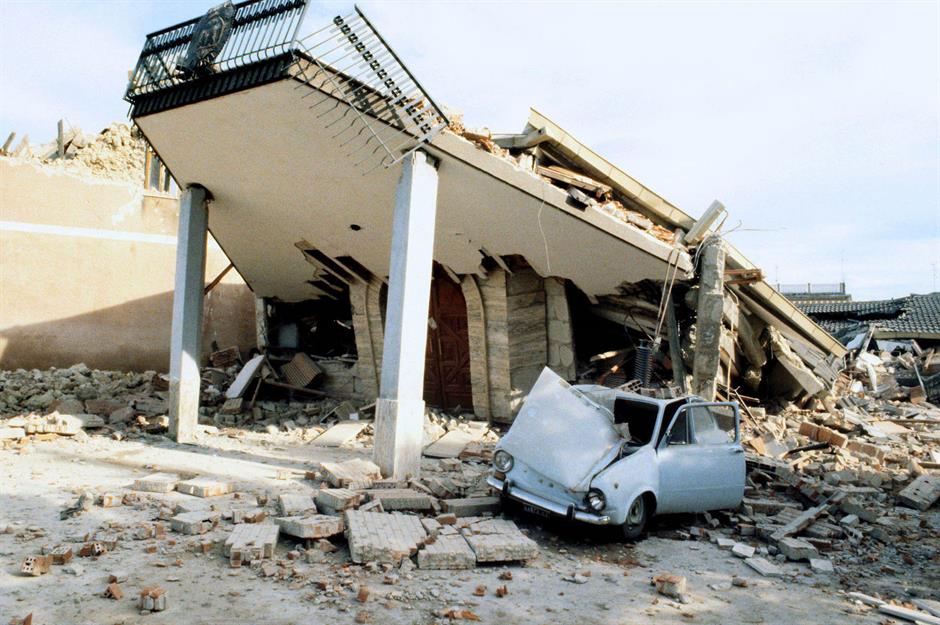
Some readers may remember the Irpinia Earthquake, which left more than 250,000 people homeless across Campania and parts of Basilicata and Puglia – including the residents of this collapsed home.
The 6.9-magnitude quake is known as “the worst catastrophe in the history of the Italian Republic”. It killed or injured a third of the population of Castelnuovo di Conza alone and rendered 80% of the village's buildings uninhabitable.
A lack of coordination in the emergency response and rescue efforts contributed to the high death toll, while reconstruction was marred by corruption and mafia interference – so much so that even 40 years later, some of the work remained unfinished.
1988: homes swallowed by an avalanche, Tyrol, Austria
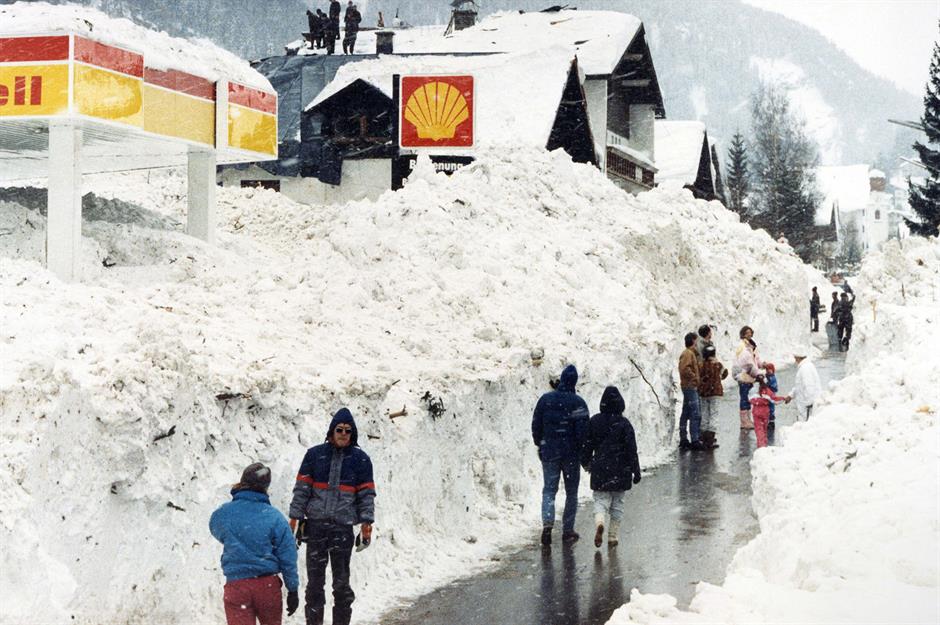
This service station and the homes behind it were engulfed by a deadly avalanche, which hit the resort of St Anton in March 1988.
"It was a sound like I have never heard...like great bombs falling," a local woman told UPI. "There was nothing to be seen, but several seconds later the windows burst open and snow began pouring in."
Thousands of skiers, including the former Dutch queen Princess Juliana, were left stranded in neighbouring resorts. Britain's Prince – now King – Charles narrowly escaped death when an avalanche hit the Swiss resort of Klosters the week before.
Loved this? Discover the amazing stories behind more buildings battling for survival...
Comments
Be the first to comment
Do you want to comment on this article? You need to be signed in for this feature